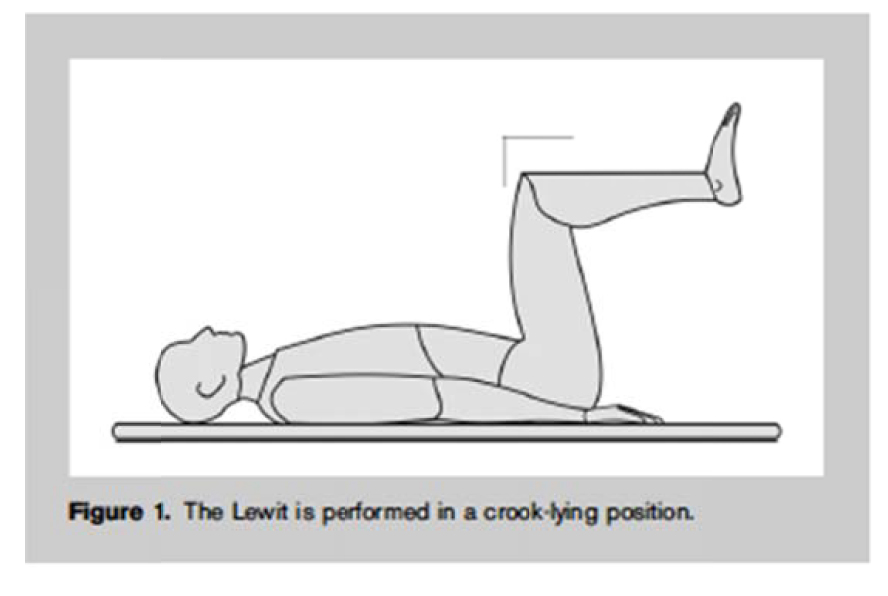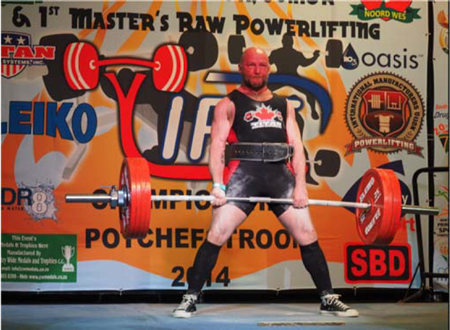Stuart McGill PhD (www.backfitpro.com)
Strength is context specific – to remain immovable, to be resilient to blows and forces, and to lift and handle large loads with low risk of injury require a specific type of strength. The body is stiffened to become unbreakable. The martial arts of the island of Okinawa, Japan have embodied these strength principles to develop the “Iron Body”. They involve muscular stiffening augmented with some breathing and breath holding techniques. We have investigated some of these techniques in the laboratory and in the training room. They enhance strength and injury resilience. Here are some thoughts on Okinawan strength and developing an iron body.
Injury resilience
The fundamental tenant of resilience to absorb blows and remain immovable is enhanced through drills to achieve total body stiffness. This arises from muscular contraction with breath holding, or controlled breathing techniques to create a rigid, unforgiving cylinder out of the torso. The spine is compressed with this muscle action while it is postured into a neutral position. This begins with the spine maintaining the normal curves associated with upright standing, although slight shifts may occur with the muscular compression. This is corrective for some people who excessively elevate their rib cage during strengthening efforts. The lungs are filled to about 70% of full volume then the ribcage and abdomen are stiffened preparing them to bear tremendous load without any internal micro‐movement at the spine joints.
One of the best drills to achieve a neutral spine while learning the forceful breathing is one we recently assessed, and published in the Journal of Strength and Conditioning Research (Badiuk, Andersen and McGill, 2014), we named it the “Lewit” after Dr Karel Lewit and his colleague Dr Pavel Kolar of Prague, Czech Republic. Dr Lewit has contributed a lifetime of creative assessment and corrective exercise approaches based on postural and breathing mechanics. His inspiration combined with great insight into several strength correctives refined by my good friend Dr Clayton Skaggs of St Louis, led to this particular exercise. While the masters of Okinawan karate describe “deep abdominal breathing” together with “muscular locks” which involve mindful focus, the “Lewit” forces this torso/abdominal compression with a neutral spine when practiced with the guidelines we published.
The essence of the “Lewit” is to develop engrams of torso stiffness where the torso cylinder remains compressed without ribcage flair. This technique may be employed in pulses or for situations calling for isometric torso strength over longer durations. When the skills acquired during the “Lewit” are transferred to standing, the visual gaze is locked onto the horizontal.
Very briefly (the interested reader is referred to our journal paper for a complete guide), the individual lays on the floor in a crook/lay position, while they teeter on the sacrum to achieve a neutral spine. Then the exercise really begins at the bottom of low tide breath, where the last remaining air is forced out of the thorax through tightly pursed lips creating a resistance. Notice how the rib cage is pulled down as the torso is compressed, but the lumbar spine does NOT press into the floor.
Once this ability to create an “iron torso” is mastered, techniques to “root into the earth” are practiced leading to the full deployment of Okinawan strength in daily strength training.

“Root” Training
Rooting into the ground begins with skilled development of the “big foot.” The foot is trained to grip the ground using the toes and the heels. This creates the largest base of support possible. Stomping the foot to achieve the muscular root is a common practice.
A progression would begin with rooting both feet, then continue by standing and rooting with just one foot. These skills are tested by a partner pushing the stiffened and rooted trainee in pulses, and with slower forces to hone the ability to steer the line of drive through the linkage into the rooted feet. Pulses may be applied with a stick – essentially the partner is given full permission to “beat the trainee” looking for a “soft spot.” Any soft spot is indicated by pain. The trainee learns to stiffen the area, eliminating the tissue compliance and pain. The forces applied to challenge the “rooted posture” may be made more complex with the addition of twisting loads applied to the arm, leg, and torso.
Other progressions may include learning to wedge the body against immovable objects. Here the body is stiffened to apply isometric force to the object, and well rooted and wedged. Mindful focus is used to conduct a survey throughout the body, auditing for any feeling of weakness or compliance. This is then corrected with more regional stiffness.
Putting This Together to Enhance Performance & Injury Resilience
Unfortunately, in my clinical practice consulting on back pain, I see far too many patients created by trainers prescribing strength training without sufficient “Okinawan strength.” They mistakenly have clients perform exercises such as deadlifts, thinking that preservation of a neutral spine is the primary coaching cue.
Those practicing Okinawan strength would begin with establishing a root to the floor. The torso is stiffened with motion only at the hip and knee to allow descent to the bar. As the grip is established on the bar the latissimus and torso muscles form an “anti‐shrug” effort adding more torso stiffness. The breath is held and the bar is pushed downwards further compressing the torso. The stiffened body becomes a wedge under the bar. Then instead of “lifting the bar”, mindful thought is directed to “pulling the hips forward and through”. Of course this would be preceded by hip assessments to establish the safe depth of the squat ‐ whether the client is qualified to pull the bar from the floor or whether they should pull the bar elevated on blocks. It is important not to impinge the hips nor sacrifice the neutral position of the stiffened spine. If you are familiar with the coaching cues of my friend and elite coach Marty Gallagher, coaching superstars in the powerlifting world such as Karwoski and Gillingham, you will be familiar with Okinawan strength principles.
Other athletic endeavors may require the ability to burst out from Okinawan stiffness into a speed task. Speed is only possible with muscle relaxation. Pavel Tsatsouline has promoted these ideas via kettlebell techniques where he hones cyclic stiffness and relaxation. There are several relaxation drills to create speed out of a base of Okinawan strength that enables faster limb motion, and higher strike force.
Many techniques throughout the martial arts have been given traditional explanations and Okinawan techniques are no exception. For example, “pushing the tongue forcefully to the roof of the mouth behind the front teeth” traditionally has been explained as the connection of energies between body meridians. However, modern scientific investigation in our lab has confirmed that this engages the deep flexors of the neck, stiffening the neck and providing an anchor for the trapezius complex to begin the formation of the stiffened tower that will enhance lifting and pulling ability.
For consideration, reflection and caution
As with all exercise approaches, customizing to the individual produces the best results. Is the Okinawan technique suited for everyone? Consider that the Okinawans’ are the tallest people – when they are sitting down! At least in the reported anthropometric literature, the Okinawans have the longest body but shortest leg length ratio on earth. This low center of gravity, and low hip hinge level creates some great leverage advantages for some tasks yet is a disadvantage for others.
If you have longer legs as a proportion of your standing height, or if you have more lordosis in your lumbar spine, the Okinawan torso compression techniques may need some “tuning”. It goes without saying that a history of back pain, particularly that associated with compression load intolerance or bending intolerance, may be exacerbated by Okinawan techniques. On the other hand, it may help others. Competent provocative testing will guide you here.
There is a downside to some iron body “hardening exercises” from traditional Okinawan techniques of striking and being struck. Some old masters have damaged their hands from years of “strike hardening” that they are substantially disabled. However, those who have developed the skill of muscularly hardening with pristine technique and no joint damage build impressive durable athleticism into their later years. As a testament to good form, Marty Gallagher has just enjoyed his 45th year of pulling 500 pounds from the floor!
More in‐depth analysis of creating injury resilience and performance enhancement is contained in my textbook Ultimate Back Fitness and Performance.

My friend Rob King injured his back a few years ago, at the IPF World Powerlifting Championships in Africa.
He has been successful in rehabilitation and in employing the principles of Okinawan strength to beat his previous mark (and load the caused injury), win the Canadian championship, and compete again at the worlds. Inspiring man!
References:
1. Badiuk, B.W.N., Andersen, J.T., McGill, S.M. (2014) Exercises to activate the deeper abdominal wall muscles: The Lewit. J. Strength Condit. Res., 28(3):856‐60. doi: 10.1519/JSC.0b013e3182aac3f3.
2. McGill, S.M. Ultimate back fitness and performance, Fifth edition 2014, Backfitpro Inc., Waterloo, Canada, ISBN 0‐9736018‐0‐4
Download article in a PDF Okinawan strength: Developing the “Iron Body” (PDF, 215Kb).

